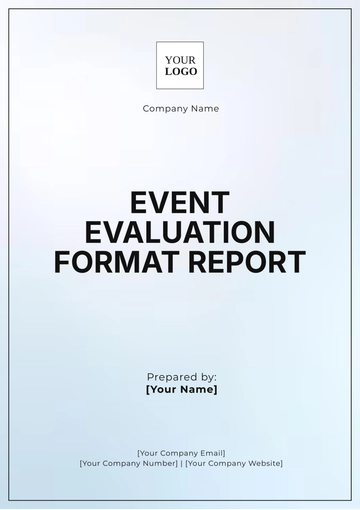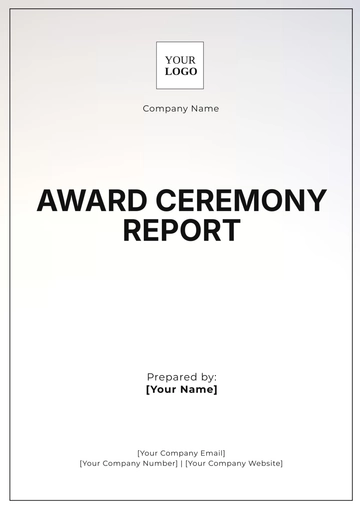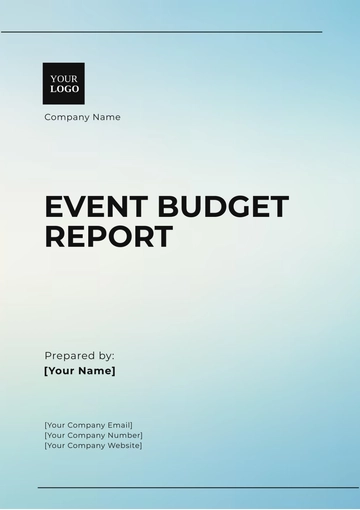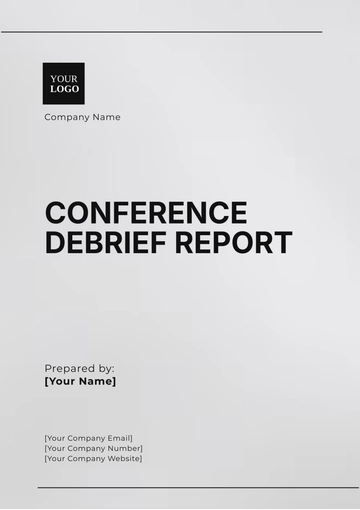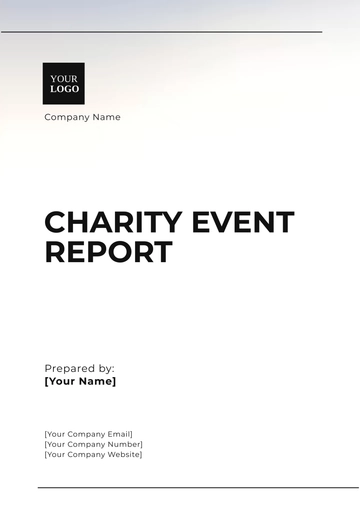Free Event Sponsorship Report

I. Introduction
Event sponsorship plays a crucial role in the overall success of an event. Securing sponsorship not only ensures financial support but also lends credibility and visibility to the event. This report outlines various aspects of event sponsorship, including types, benefits, strategies for obtaining sponsorship, and measuring the effectiveness of sponsorships.
II. Types of Sponsorship
Understanding the different types of sponsorship can help in tailoring the approach to potential sponsors. Each type offers unique benefits and caters to different objectives of the sponsors.
A. Financial Sponsorship
Financial sponsorship involves direct monetary support from sponsors. These sponsors usually seek high levels of brand visibility and recognition in return for their investment.
B. In-kind Sponsorship
In-kind sponsorship includes non-monetary contributions such as products, services, or expertise. This type of sponsorship is highly valuable, especially for events with limited budgets.
C. Media Sponsorship
Media sponsorship involves media outlets providing advertising and coverage for the event. In return, the media sponsors gain exclusive content and increase audience engagement.
Type of Sponsorship | Description |
|---|---|
Financial Sponsorship | Direct monetary support for brand visibility. |
In-kind Sponsorship | Non-monetary contributions like products or services. |
Media Sponsorship | Advertising and media coverage in exchange for content exclusivity. |
III. Benefits of Sponsorship
Sponsorships offer a wide range of benefits to both the event organizers and the sponsors. These benefits are critical in forging long-lasting partnerships.
A. For Event Organizers
Event organizers gain several advantages from sponsorships, such as:
Increased financial resources
Enhanced credibility and branding
Access to partners' audiences and networks
B. For Sponsors
Sponsors also derive significant benefits, including:
Brand visibility and awareness
Lead generation and customer acquisition
Corporate social responsibility (CSR) enhancement
IV. Strategies for Securing Sponsorship
Effective strategies can significantly enhance the likelihood of securing sponsorship. These strategies involve a mix of research, personalized communication, and value proposition.
A. Identifying Potential Sponsors
Research and identify potential sponsors whose goals align with the event's objectives. Utilize databases, industry contacts, and social media to build a list of prospects.
B. Crafting Proposals
Customize sponsorship proposals to clearly outline the benefits for each potential sponsor. A well-crafted proposal includes:
Introduction and background of the event
Detailed sponsorship packages
Expected reach and audience demographics
C. Building Relationships
Establish and maintain relationships with sponsors through regular communication, transparency, and demonstrating the return on investment (ROI).
V. Measuring Sponsorship Effectiveness
Evaluating the success of sponsorship is vital for the continued growth of partnerships and future sponsorship opportunities. Several metrics and tools can be utilized for this purpose.
A. Key Performance Indicators (KPIs)
KPIs such as brand visibility, audience engagement, and lead generation help measure the effectiveness of sponsorships.
B. Surveys and Feedback
Gathering feedback from attendees and sponsors through surveys provides insights into the success and areas for improvement.
C. Reporting and Analysis
Comprehensive reports detailing the outcomes of the event and sponsorship impact should be prepared. These reports can include:
Data on brand exposure
Audience demographics and engagement levels
Overall sponsor satisfaction and ROI
By continuously measuring and analyzing the effectiveness of sponsorships, event organizers can refine their strategies and build more compelling sponsorship packages in the future.
- 100% Customizable, free editor
- Access 1 Million+ Templates, photo’s & graphics
- Download or share as a template
- Click and replace photos, graphics, text, backgrounds
- Resize, crop, AI write & more
- Access advanced editor
You may also like
- Sales Report
- Daily Report
- Project Report
- Business Report
- Weekly Report
- Incident Report
- Annual Report
- Report Layout
- Report Design
- Progress Report
- Marketing Report
- Company Report
- Monthly Report
- Audit Report
- Status Report
- School Report
- Reports Hr
- Management Report
- Project Status Report
- Handover Report
- Health And Safety Report
- Restaurant Report
- Construction Report
- Research Report
- Evaluation Report
- Investigation Report
- Employee Report
- Advertising Report
- Weekly Status Report
- Project Management Report
- Finance Report
- Service Report
- Technical Report
- Meeting Report
- Quarterly Report
- Inspection Report
- Medical Report
- Test Report
- Summary Report
- Inventory Report
- Valuation Report
- Operations Report
- Payroll Report
- Training Report
- Job Report
- Case Report
- Performance Report
- Board Report
- Internal Audit Report
- Student Report
- Monthly Management Report
- Small Business Report
- Accident Report
- Call Center Report
- Activity Report
- IT and Software Report
- Internship Report
- Visit Report
- Product Report
- Book Report
- Property Report
- Recruitment Report
- University Report
- Event Report
- SEO Report
- Conference Report
- Narrative Report
- Nursing Home Report
- Preschool Report
- Call Report
- Customer Report
- Employee Incident Report
- Accomplishment Report
- Social Media Report
- Work From Home Report
- Security Report
- Damage Report
- Quality Report
- Internal Report
- Nurse Report
- Real Estate Report
- Hotel Report
- Equipment Report
- Credit Report
- Field Report
- Non Profit Report
- Maintenance Report
- News Report
- Survey Report
- Executive Report
- Law Firm Report
- Advertising Agency Report
- Interior Design Report
- Travel Agency Report
- Stock Report
- Salon Report
- Bug Report
- Workplace Report
- Action Report
- Investor Report
- Cleaning Services Report
- Consulting Report
- Freelancer Report
- Site Visit Report
- Trip Report
- Classroom Observation Report
- Vehicle Report
- Final Report
- Software Report








